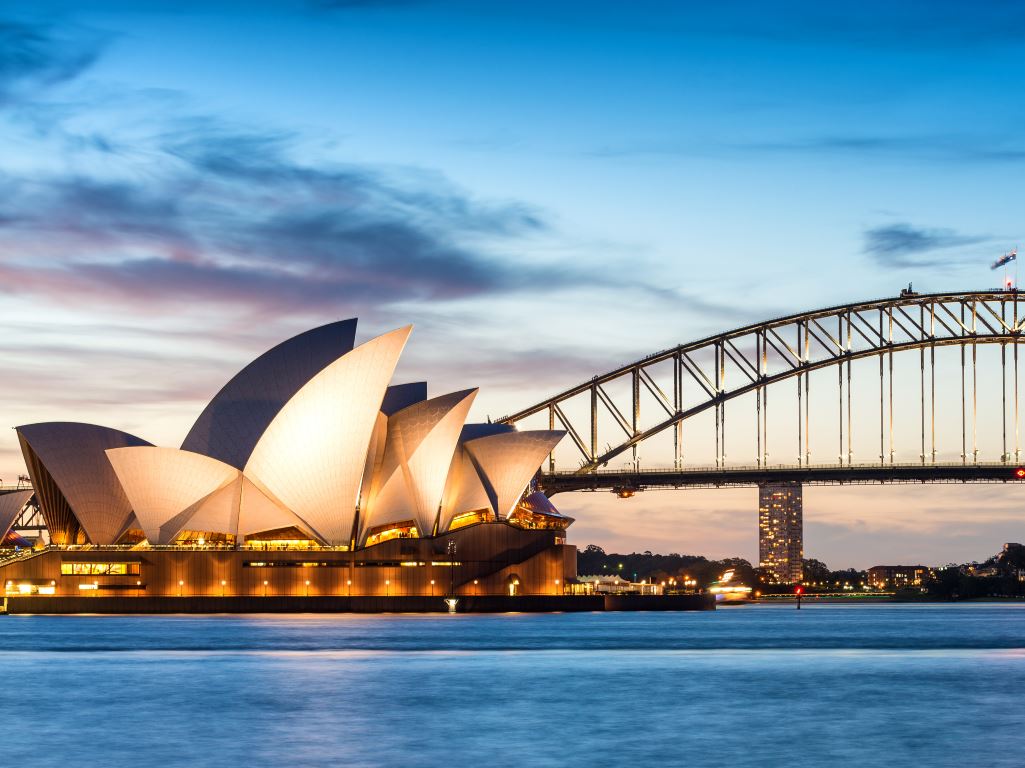There can also be large distances between petrol stations. It is advisable to fill up at every opportunity, particularly if you are driving in the Outback (see below).
Australian driving laws
Which side of the road do they drive on?
Drive on the left in Australia.
Seat belts in Australia
Seat belts are compulsory in front and rear seats whilst children should have safety harnesses. There is a $250 fine for not wearing your seat belt which is applied to the driver.
Drink driving in Australia
Drink driving is taken extremely seriously by the Australian police and random breath tests are conducted in all states. The blood alcohol limit is 50mg alcohol per 100ml blood. For drivers under the age of 25 and those who’ve held a licence for less than 3 years, this drops to 20mg per 100ml of blood.
Driving in the Outback
Outside of its cities, Australia has vast stretches of wild country commonly known as the "Outback". This is fantastic to drive through, although it is so vast and has enormous empty distances where you can drive for half a day and not pass through a single town. If you intend to travel in the Outback you should plan your itinerary thoroughly, seek local advice on what precautions you should take, and leave your travel plans and expected arrival time with local tourist authorities, the hotel, or friends and family.
ALWAYS ensure you have plenty of water (5 litres per person per day) and some high energy snacks and food if driving in the Outback. Also carry a good map, radiator coolant, and oil.
Dangers on the road
Cattle and kangaroos are a major hazard on country roads. Collisions with these and oncoming vehicles when swerving to avoid them are common. Wildlife is most active at dawn and dusk, so to avoid the risk, try not to drive at these times.
If you hit a marsupial such as a kangaroo or koala, you are required by law to stop and check whether or not they have any young in their pouches.
For more information on your trip, read our Australia travel guide.
Essential driving information
- You must carry your driving licence and passport when driving.
- The give way to the right rule applies. In built-up areas, priorities are usually clearly marked.
- Hire car insurance often won’t cover you for driving on unsealed roads. Check your policy before you set off if going into the Outback.
- Always park in the direction of traffic flow. There are parking meters in cities.
- Trams in Adelaide, Melbourne, and Sydney should only be overtaken on the left and you should stop behind at halts to allow passengers on and off. You should make sure that you obey road markings at right turns to avoid obstructing trams.
- The minimum driving age is 17 years.
- Road trains can be up to 55 metres long and weigh over 50 tonnes. Overtake with caution and expect a vortex effect where the car will be sucked towards the train.
What should I do if I breakdown?
If you breakdown in Australia get the vehicle to the side of the road and call the supplier immediately. It is recommended you contact us at the same time to ensure that you follow the correct procedure.
What should I do if I have an accident?
If you’re in an accident, you MUST notify the Police and get an accident report for insurance purposes. Failure to do so may result in you footing the whole bill. Leaving the scene of an accident is an offence and you could be sent to prison.
You must also inform the car rental provider straight away. We are always on hand to help too.
Toll roads in Australia
There are some toll roads in Australia which are mainly found in major at motorways and bridges. These include the Sydney Harbour Bridge and the Sydney Harbour tunnel.
- CityLink
- Cross City Tunnel
- EastLink
- Gateway Motorway (M1 becomes M2 at 8 Mile Plains)
- Go Between Bridge
M1
- Woolloomooloo, NSW
- Sydney Harbour Tunnel
M2
- Sydney Harbour Bridge
- Artarmon – North Ryde, NSW
- North Ryde – Baulkham Hills, NSW
- Gailes – Loganholme, Qld
M5
- Beverly Hills – Moorebank, NSW
- Toowong – Kelvin Grove, Qld
M7
- Windsor – Clayfield, Qld
- Woolloongabba – Bowen Hills, Qld
- Baulkham Hills – Prestons, NSW
Driving distances in Australia
Adelaide to Sydney – 1,375km (14hrs 33mins)
Adelaide to Melbourne – 726km (7hrs 51mins)
Brisbane to Sydney – 922km (10hrs 14mins)
Canberra to Adelaide – 1,159km (12hrs 10mins)
Canberra to Sydney – 287km (3hrs 4mins)
Cairns to Brisbane – 1,701km (19hrs 9mins)
Perth to Adelaide – 2,695km (28hrs)
Perth to Sydney – 3,934km (41hrs)
Sydney to Melbourne – 878km (8hrs 51mins)
Sydney to Cairns – 2,419km (27hrs)
Book now



